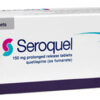Medication Overview
Flonase, known generically as fluticasone propionate, is a prescription and over-the-counter medication used to treat nasal symptoms of allergic and non-allergic rhinitis. It is a corticosteroid that works by reducing inflammation in the nasal passages to relieve symptoms such as congestion, sneezing, and runny or itchy nose. Flonase is typically administered as a nasal spray. It is available in various formulations, including Flonase Sensimist, which provides a gentler mist for those with sensitive noses. The active ingredient is part of the glucocorticoid family, primarily used for its ability to control inflammation.
Mechanism of Action
Fluticasone propionate, the active ingredient in Flonase, exerts its therapeutic effects through its potent anti-inflammatory activity. This is primarily achieved by inhibiting multiple types of inflammatory cells and decreasing the production of inflammatory mediators such as cytokines and histamines. By binding to glucocorticoid receptors, fluticasone modifies the transcription of anti-inflammatory genes, resulting in decreased immune response and symptom relief. This mechanism not only alleviates immediate symptoms but also reduces the potential for ongoing nasal inflammation associated with allergies.
Indications for Use
Flonase is indicated for the management of nasal symptoms caused by both seasonal and perennial allergic rhinitis, as well as non-allergic rhinitis. These symptoms include nasal congestion, sneezing, and runny or itchy nose. It may also be used in individuals with nasal polyps to help manage symptoms. Flonase is suitable for use in adults and children aged four years and older. In some cases, it may be prescribed by a healthcare provider for off-label uses based on an individual patient’s needs.
Dosage and Administration
The recommended starting dose for adults and adolescents aged 12 years and older is two sprays in each nostril once daily, totaling 200 micrograms per day. For children aged 4 to 11 years, the recommended dose is one spray in each nostril daily. Patients should be advised to tilt their head slightly forward to facilitate correct administration, ensuring the spray is directed clear of the nasal septum. It is crucial to shake the bottle gently before each use and prime the spray if it is being used for the first time or if it hasn’t been used in a week or more.
Pharmacokinetics Details
Fluticasone propionate exhibits low systemic bioavailability when administered as a nasal spray, typically less than 2%. This stems from extensive first-pass metabolism in the liver and poor absorption through the nasal mucosa. The drug is primarily metabolized by the cytochrome P450 enzyme CYP3A4. Its main inactive metabolite is formed by oxidation to 17β-carboxylic acid. Due to its rapid metabolism and low systemic bioavailability, the risk of systemic side effects is minimized, making it suitable for long-term use with appropriate supervision.
Potential Drug Interactions
Coadministration of Flonase with potent CYP3A4 inhibitors, such as ritonavir and ketoconazole, may lead to increased plasma concentrations of fluticasone, potentially enhancing systemic corticosteroid effects. Although nasal administration leads to minimal systemic exposure, caution is advised when using strong CYP3A4 inhibitors concomitantly. There are generally few significant interactions with Flonase due to its topical formulation and limited systemic absorption.
Common Side Effects
Typical side effects of Flonase include nasal dryness or irritation, minor nosebleeds, and an unusual taste or smell. These effects are usually mild and transient. Occasionally, patients may experience headache or sore throat. It is important to differentiate these side effects from potential allergy symptoms to ensure accurate monitoring of the treatment’s efficacy. If side effects persist or worsen, patients should consult their healthcare provider.
Storage and Handling
Flonase should be stored at room temperature, away from direct sunlight and moisture, and kept out of reach of children. The bottle should be kept upright when not in use to prevent leakage and maintain proper spray function. Users should be mindful of noting the expiration date on the label and dispose of the medication responsibly if it expires or if advised by a healthcare provider.
Special Populations Consideration
In geriatric patients, Flonase is generally well-tolerated, and no specific dose adjustment is typically necessary. For pediatric patients, the minimum effective dose should be used to mitigate potential growth effects associated with corticosteroid use. Pregnant and breastfeeding women should only use Flonase if clearly needed and directed by a healthcare professional, as the effects on fetal and infant development are not fully known.
Patient Counseling Information
Patients should be instructed on the proper technique for using the nasal spray to maximize drug efficacy and minimize potential side effects. They should be advised to inform their healthcare provider if they experience persistent side effects or if symptoms do not improve after regular use. Patients should be aware of the potential for nasal irritation and advised to report any significant nasal discomfort or recurrent nosebleeds. Additionally, patients should be informed about the need to regularly clean the nasal spray applicator to prevent blockages or contamination.








Reviews
There are no reviews yet.